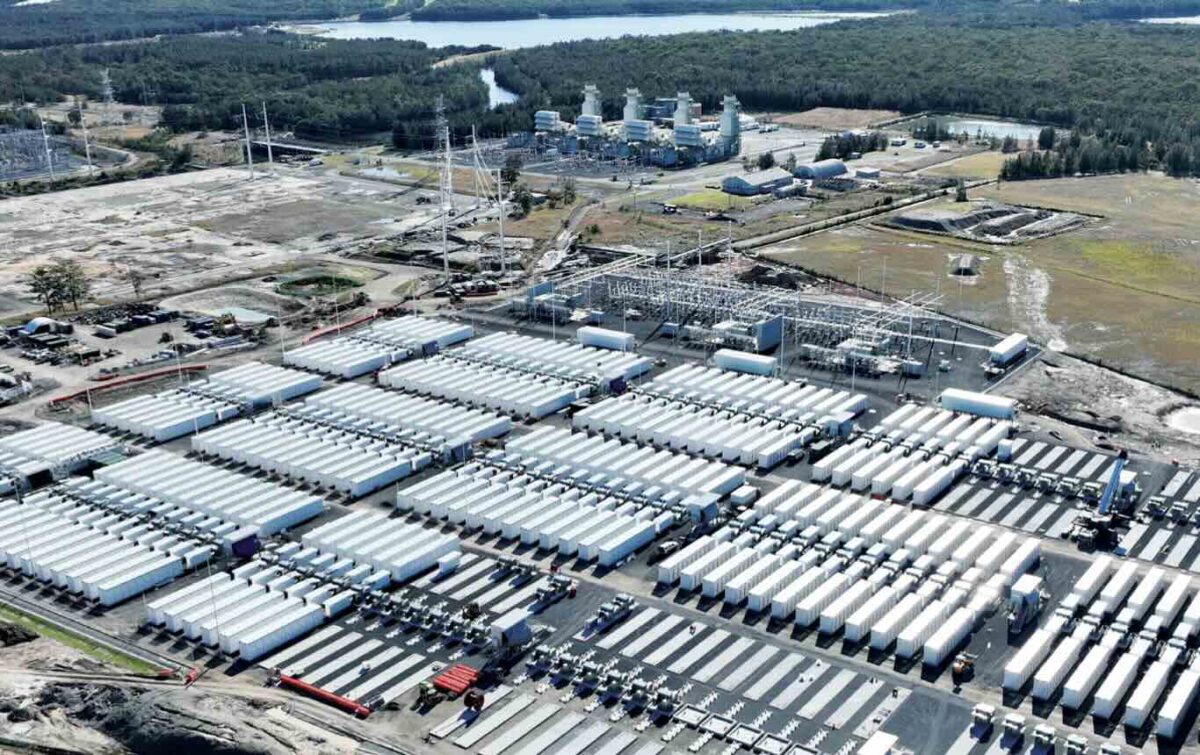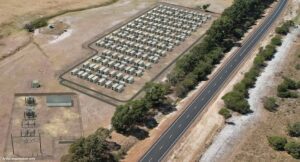The most powerful battery to be built in Australia, and one of the most powerful to be built anywhere in the world, has been making slow progress through its commissioning process and appears set to miss at least some of its early contract revenue targets for fiscal 2025.
The 850 megawatt (MW), 1680 MWh Waratah Super Battery is principally designed to act as a giant “shock absorber” for the grid, providing the emergency support that will allow more electricity to be transported into the state’s biggest load centres in Sydney, Newcastle and Wollongong.
It was originally intended to be fully operational by the end of March, in time for the then anticipated closure of the Eraring coal fired generator in August, although that closure has since been delayed by at least two years.
The early progress was promising. Waratah was constructed on schedule last year, at the site of the shuttered Munmorah coal generator on the central coast of NSW, and was registered in September after it obtained approval for its GPS (generator performance standard) “in compressed time”, the principal contractors boasted at the time.
Waratah even made a surprise and crucial appearance on the grid in November, when it was recruited by the Australian Energy Market Operator to provide back-up on a day when electricity supplies threatened to be short.
“If you had asked me if the Waratah Super Battery would have been helping keep the lights on in Nov, 2024 a year ago, I would have likely said no. But it did, and it has,” Nick Carter, the CEO of Waratah owner Akaysha Energy, wrote at the time.
“I don’t think many folks understand how hard it is to follow directions and participate in the market when the system is part way through commissioning and many of the systems that would normally be used are only partly available or not at all. Speaks volumes to the efforts here across all parties.”
Since then, however, progress appears to have been slow, and has dragged on far longer than the anticipated six months. The battery is active, but at low levels of capacity, and seemingly still stuck at a hold point.

That will not be surprising to some in the industry, for two reasons. At 850 MW, Waratah will be the biggest single unit connected to Australia’s main grid – overtaking the 750 MW Kogan Creek coal fired power station in Queensland. It has added complexity, of course, because it can both charge from as well as discharge into the grid.
The other reason is that this is the first major Australian project for the battery storage supplier, the US-based Powin, and the biggest for its partner, eks Energy, now owned by Hitachi.
Powin celebrated in late 2023 that it had obtained the GPS (generation performance standard) agreement in “compressed” time. But the commissioning process often proves as or even more challenging.
Other companies seeking to deliver projects in Australia for the first time, be they big batteries, or wind or solar farms, often struggle with the complexity of Australia’s notoriously difficult grid connection and commissioning processes. They include the Torrens Island, Capital and Tailem Bend battery projects.
And this is despite efforts announced by the NSW state government in May last year to spend $8.5 million to fund “big battery connection squads” to help make sure that the Waratah battery, and others at Liddell, Orana and Richmond Valley, were completed on time.
See: Big battery connection “squads” to the rescue as NSW scrambles to fill grid reliability gaps
Renew Economy reached out to the Blackrock-backed Akayasha, which is also building the Ulinda Park, Brendale and Orana big batteries in Queensland and NSW, but did not hear back.
EnergyCo, which has oversight over the Waratah project, said in response to Renew Economy’s enquiries that the construction of the Waratah Super Battery was finished on schedule in October 2024.
“The battery energy storage system portion of the project is progressing through hold point testing in the lead-up to the start of its operation,” an EnergyCo spokesman said in an emailed statement.
“Testing and commissioning is ongoing. This is a necessary and rigorous process being overseen by Akaysha, Transgrid and AEMO.” EnergyCo declined to provide any further details on where the project was at in terms of hold points, or on an expected completion date.
The “shock absorber” functions are delivered as part of a System Integrity Protection Scheme (SIPS), and is the biggest – although not the first – to be implemented in Australia. Many suggest more such batteries should be built across the grid to support more wind and solar capacity.
The financial reward of the SIPS contract for Waratah, unlike those that supported the Hornsdale battery in South Australia and the Victoria Big Battery, remains under wraps.
Until the battery is fully operating, and the SIPS is operational, there are no costs to energy consumers and no impacts on grid reliability. But it does likely mean missed revenue for the Waratah Super Battery, and for the wind, solar and pumped hydro projects that won a tender to be “paired generation” for the battery.
The Australian Energy Regulator, which approved the payment schedule in 2023 but agreed to keep the costs secret, helpfully published these tables below, full of black smudges, to ensure that no detail about money came to light. But it did make clear that the revenues would start in 2024/25. That now seems unlikely.

In the EIS filed with the state government in 2022, consultant GDH said Waratah’s operations were planned to commence in November 2024, with a 350 MW core service in place for operation during the summer months.
“The final stage (i.e., up to 850 MW) is planned to be in operation by March 2025 prior to the (then) expected closure of Eraring,” it said.

Akaysha Energy has negotiated a format called a “Seasonal Sculpted Core Service”, where it makes up to 700MW and 1400MWh of capacity to act as the giant shock absorber, between 5am and sunset, when power system demand and paired generation availability levels are relatively high.
It will provide at least 500 MW and 1000 MWh of battery capacity reserved between sunset and 2am, when power system demand and paired generation availability levels are relatively lower. And it will provide at least 300 MW and 600 MWh of battery capacity between 2am and 5am, when power system demand is at its lowest.
The paired generators, which will adjust their output as the battery adjusts its own, are Squadron Energy’s Sapphire wind farm, FRV’s Metz solar farm, and Snowy Hydro’s Tumut pumped hydro generator.
The capacity and payments for this paired generation have also not been disclosed, but like the AER table above, were assumed to start in 2024/25.








